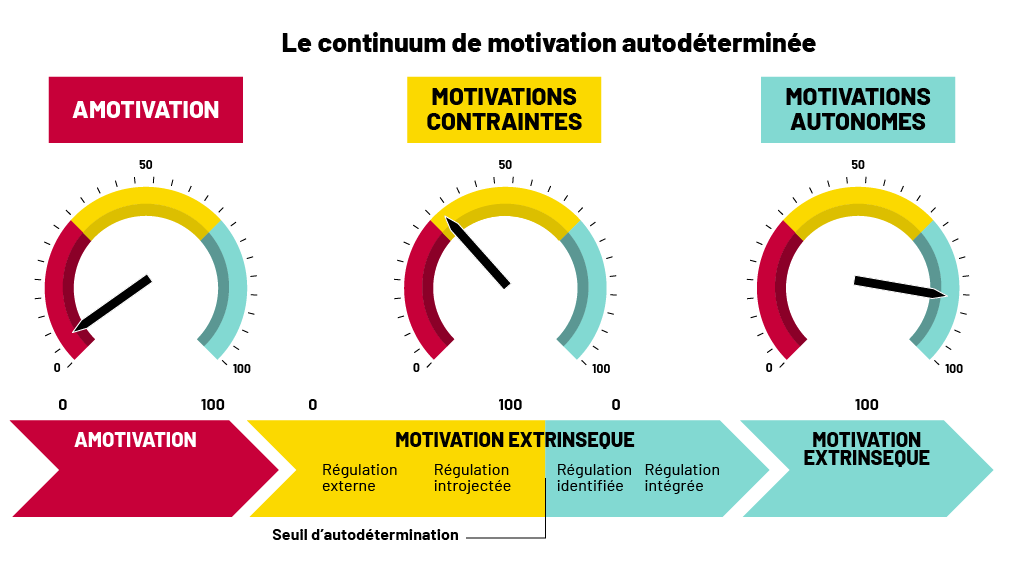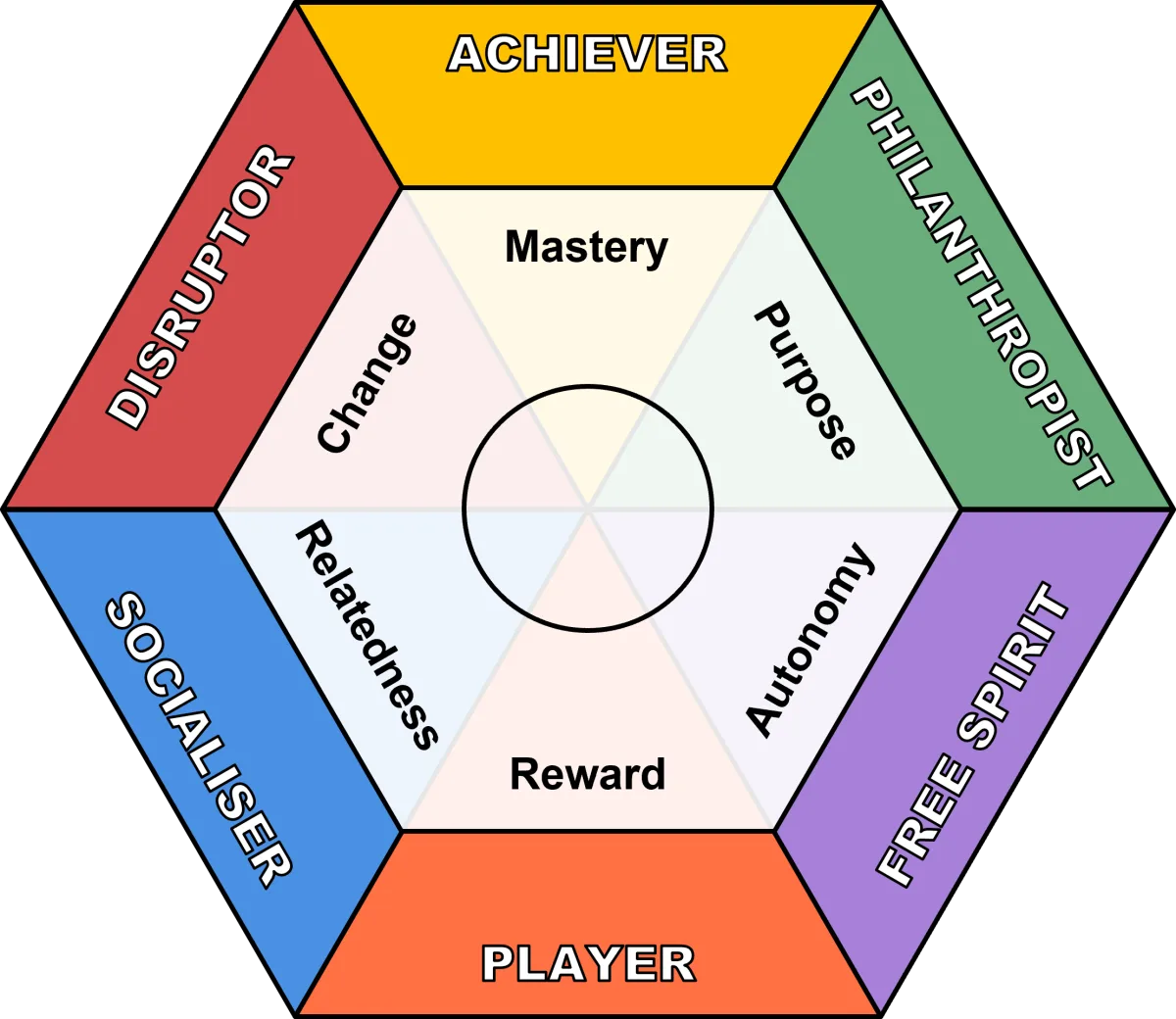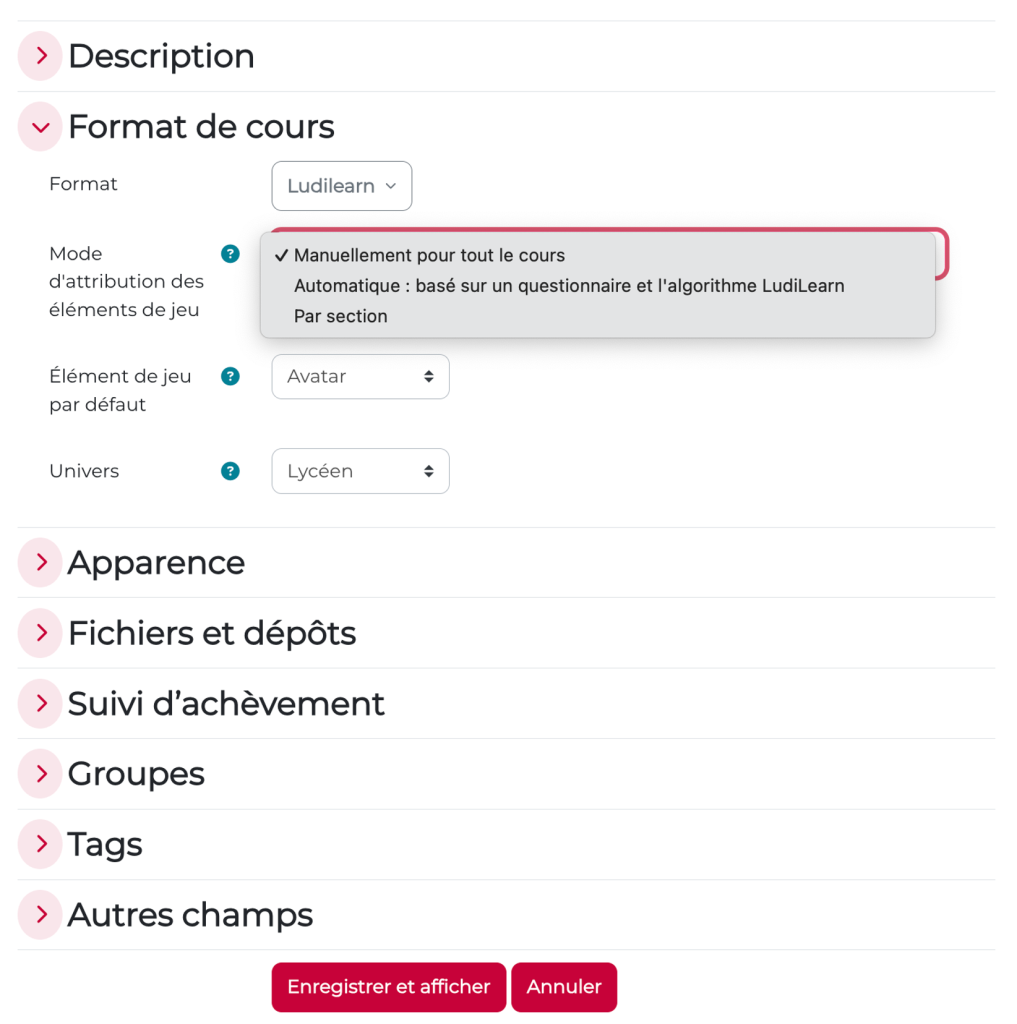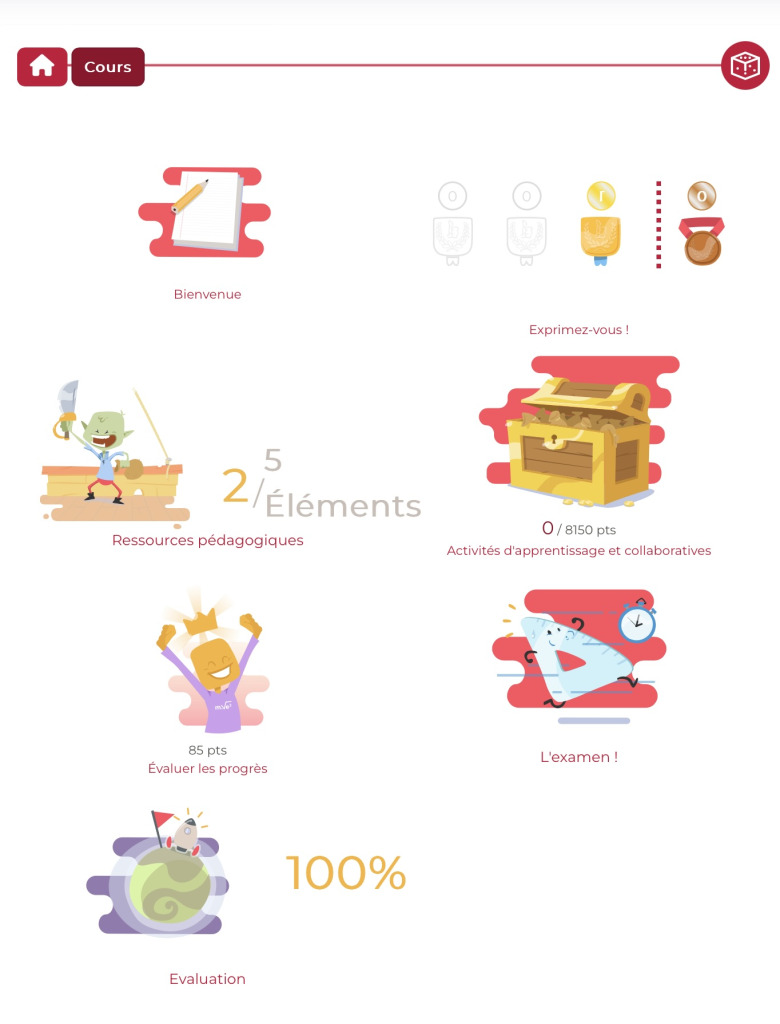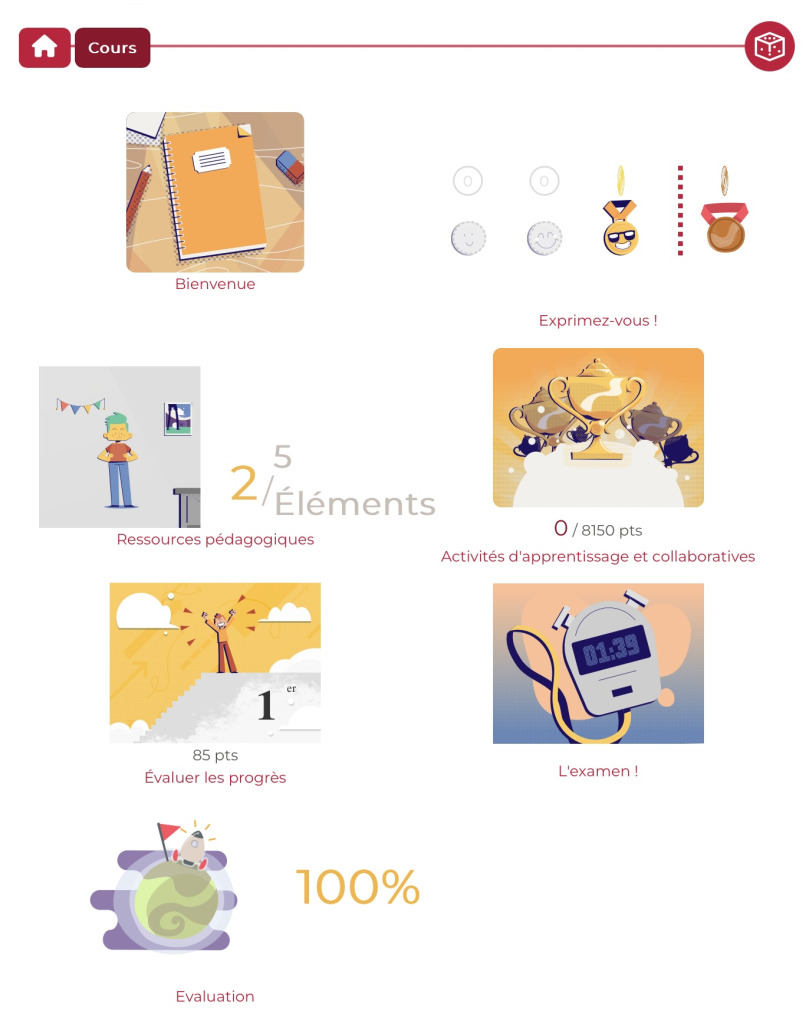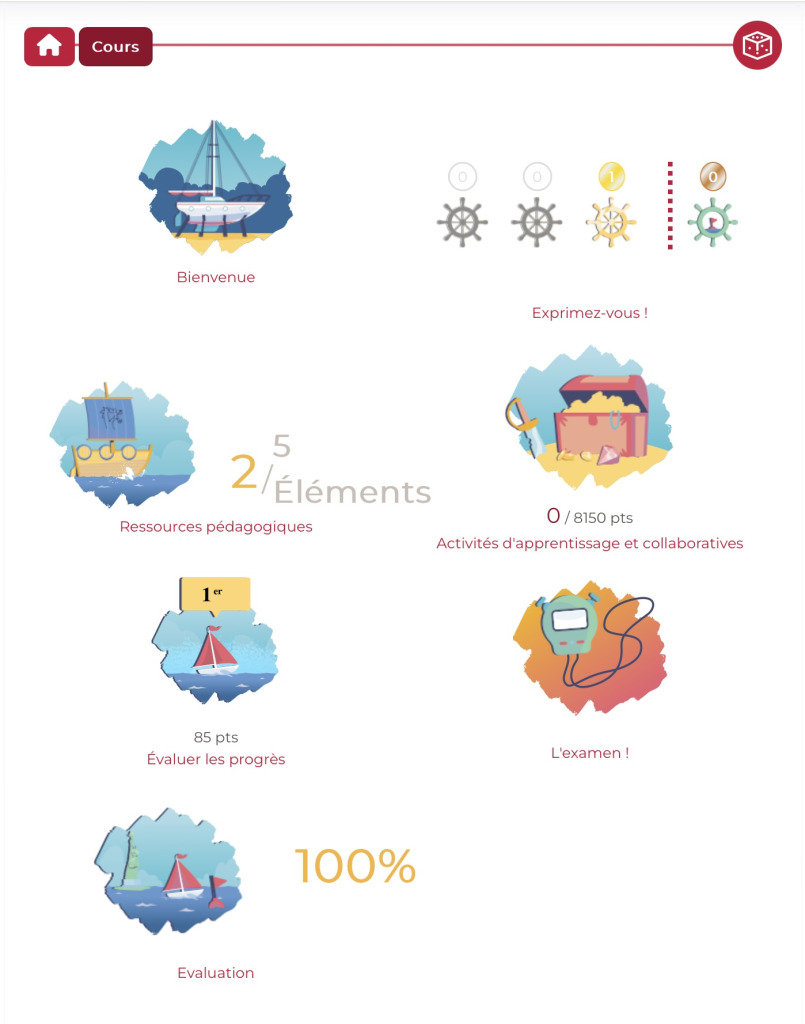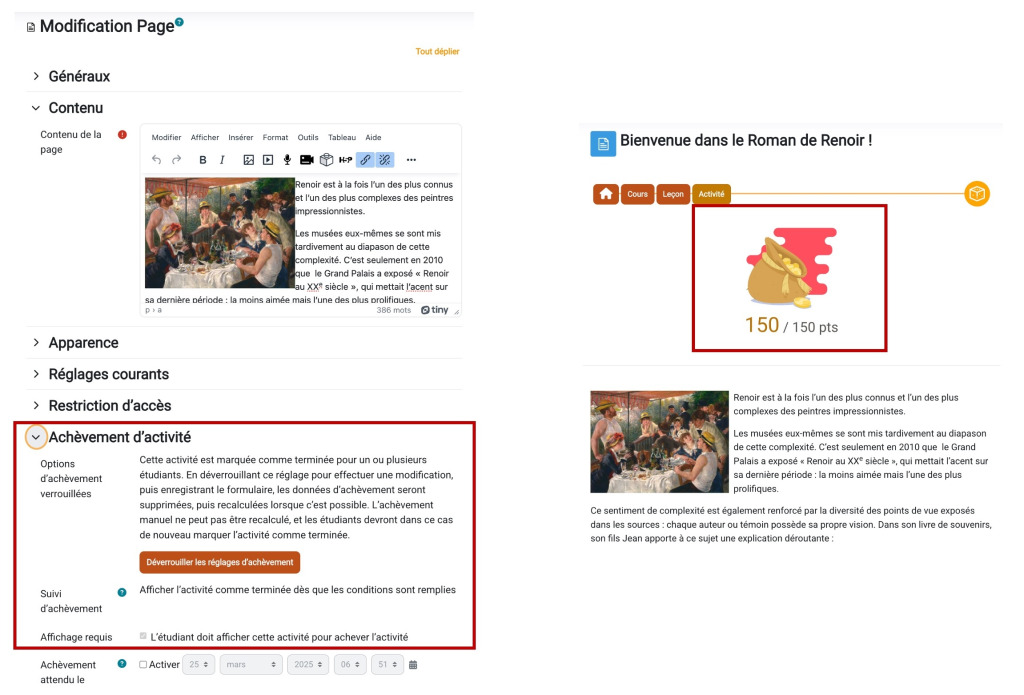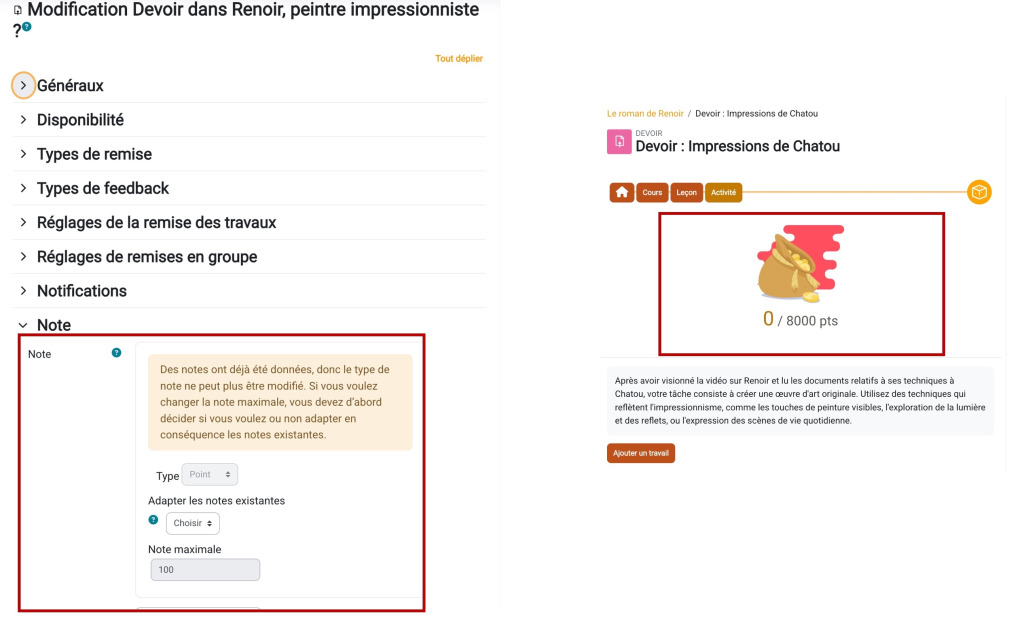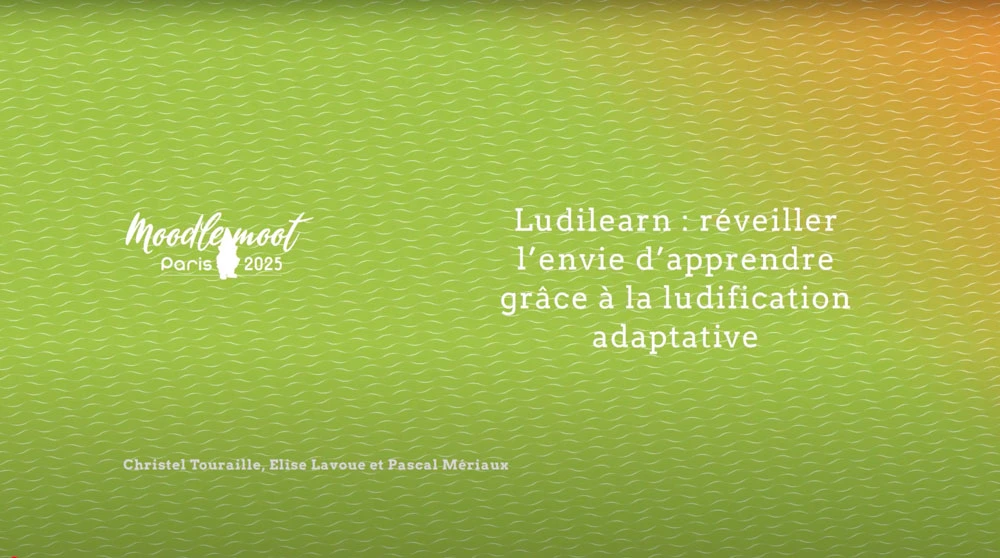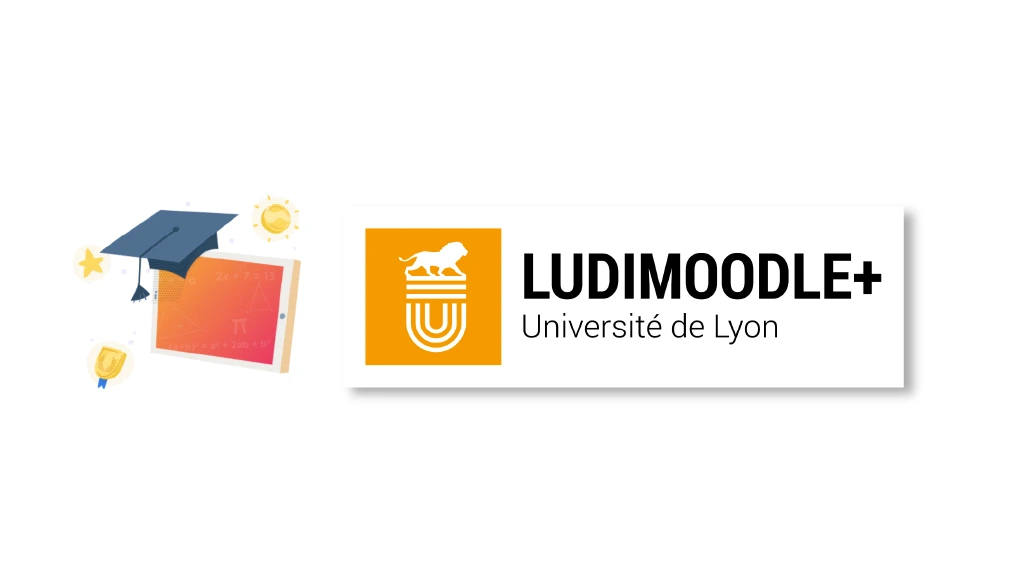As Professor Élise Lavoué , with whom Pimenko collaborated on the Ludimoodle+ project, often reminds us:
“ Gamification in training is not effective in itself! “
This reminder, fueled by years of research conducted within the LIRIS laboratory and the SICAL team, questions our certainties about the use of ludification in e-learning. How can gamification improve learner motivation and results?
One of the keys lies inadapting to learners’ profiles. That’s where an innovative solution comes in: Ludilearn, an adaptive gamification plugin developed for the Moodle LMS and its hundreds of thousands of teachers and trainers.
When play meets learning: deconstructing preconceived ideas
As Professor Élise Lavoué regularly explains during these presentations, gamification is defined as“the use of game design elements in non-game contexts” (Deterding 2011). This definition has become a benchmark in the field, and needs to be put into perspective with a more complex reality.
LIRIS research reveals results that illustrate the classic uses of gamification in training: the effects of gamification vary from learner to learner. In other words, a uniform approach to gamification can have contrasting effects. For some learners,adding fun elements can even be counter-productive.
On the one hand, it’s essential to understand the motivating forces behind the different types of motivation, and on the other, to have the essential knowledge to use gamification effectively in training. Work carried out with over 2,000 students since 2018 clearly shows that simply adding points, a leaderboard or any other inappropriate gamification element can have the opposite effect to that intended.
Motivation: a more complex mechanism than it seems
Various studies have shown that motivation in training is not a uniform concept, but rather a continuum ranging from constrained to autonomous motivation. This is illustrated, for example, by the theory of self-determination (TAD, Ryan & Deci, 2017), which takes a qualitative approach to motivation, distinguishing between different types of motivation.
Image adapted from Theory of Self-Determination (TAD, Ryan & Deci, 2017), Université Grenoble Alpes(https://promobe.univ-grenoble-alpes.fr/fr/presentation/concepts-theoriques/motivation).
The work led by Professor Elise Lavoué, based on an in-depth understanding of these motivational mechanisms, has enabled us to identify various determining factors:
- The paradox of initial motivation: “the less intrinsically motivated students are initially, the more motivation they gain”. This discovery illustrates the importance of a differentiated approach.
- The importance of personalization: The research team found that each learner reacts differently to game mechanics. A points system may motivate some, while a customizable avatar will be more effective for others.
- The temporal dimension: one of the lessons of our experiments is that the effect of gamification is not immediate. Positive results on motivation are generally observed after several uses, with differences depending on the profile.
Future publications will enable us to complete and continue disseminating our results. You can find them at https://ludimoodle.universite-lyon.fr/
Taking learner profiles into account: a key success factor with the HEXAD model
To work on the different profiles, the HEXAD model was used by LIRIS in the Ludimoodle+ project. There are several player profiles:
Marczewski, A. (2015). User Types. In Even Ninja Monkeys Like to Play: Gamification, Game Thinking and Motivational Design (1st ed., pp. 65-80). CreateSpace Independent Publishing Platform.
- The Achiever: motivated by competence and mastery.
- The Player : motivated by reward.
- The Socialiser – Socialiseur : motivated by social relationships and a sense of belonging.
- The Free Spirit: motivated by autonomy.
- The Disruptor – A disrupter motivated by change.
- The Philanthropist – Philanthrope: motivated by meaning and utility.
These different profiles are taken into account to identify the right game element for each learner. The testimonies gathered from 4th grade students during experiments as part of the Ludimoodle+ project are enlightening:
“I liked the fact that there was no time, that we weren’t in a hurry to answer […] That there was a progression, that made it a challenge.”
“I liked the characters and unlocking items. If I couldn’t do it, I’d start again. By the end I had a lot of items.”
“Before starting an exercise, I would set myself a goal. For example, to at least have the money.”
This feedback illustrates the importance of a personalized approach to gamification. It’s not the game that motivates, but the way it meets the specific needs of each learner.
From research to practice: developing the Ludilearn plugin for Moodle
Transposing the Ludimoodle+ project’s research into a concrete solution represented a major technical and pedagogical challenge. This is reflected in the “Ludilearn” plugin for Moodle, which directly integrates the principles validated by the research, and this is concretely reflected in its functionalities:
- A questionnaire based on the HEXAD model to identify learner profiles and assign suitable game elements to each learner
- An adaptation algorithm based on research by LIRIS teams
- Six game elements corresponding to the different profiles identified, including one game element (stopwatch) available only in specific contexts.
- The flexibility of the plugin to take into account the nuances that are essential when implementing gamification in e-learning (deactivation of gamification, customization of game elements, different attribution modes).
Ludilearn in action: an effective approach to adaptive gamification
Assigning game elements for maximum pedagogical flexibility
Experiments have shown that effective gamification must be able to adapt not only to the learners, but also to the pedagogical objectives. Ludilearn offers three different ways of assigning game elements, each designed to meet specific pedagogical needs.
Automatic (adaptive) mode: maximum customization
This is really the heart of the LudiMoodle+ innovation. In this mode :
- On first login, learners complete a 12-question HEXAD-12 questionnaire to identify their player profile.
- The algorithm, developed by the LIRIS research team, uses the questionnaire data and automatically assigns the game element that best matches this profile.
Manual mode at course level: consistency and simplicity
In this mode, the teacher retains total control by choosing a single game element that applies uniformly to the entire course.
Section-based mode: fine-tuned to content
This mode offers maximum flexibility by allowing different game elements to be assigned to each section of the course. This flexibility allows you to fine-tune gamification according to your pedagogical objectives, while retaining the option of completely deactivating gamification on specific sections or activities.
This flexibility allows teachers to adapt gamification to their specific needs. It is also possible not to activate the ludificaiton on specific parts of the course.
Three universes for visual adaptation to the learning context
- The School Universe: designed for the school environment, with a familiar design for younger children.
- The Professional world: a more sober atmosphere, suited to continuing education and professional training.
- The world of secondary school: specially designed for young adults, with a balance of fun and seriousness.
This visual flexibility enables trainers to create a coherent experience with their audience, while maintaining the pedagogical effectiveness of the game mechanics. Each world retains the same adaptation and progression functionalities, with only the appearance changing to better match learners’ expectations.
Seamless technical integration with Moodle
To achieve this adaptive gamification overlay, Ludilearn cleverly leverages Moodle’s native functionalities, guaranteeing seamless integration without the need for complex configuration. The plugin exploits two fundamental Moodle mechanisms.
Business completion: the driving force behind progress
This integrated Moodle feature enables you to accurately track learners’ progress through the various course activities. A learner can complete an activity in several ways, for example :
- Viewing a resource
- By taking a quiz
- By taking part in a forum
- By manually checking a completion box
Ludilearn uses this completion data to dynamically feed the various game elements. For example, badges are unlocked, scores increase and the progress bar advances as the learner completes course activities.
Example of a page-type activity and an automatic activity completion condition: Luidlearn acts as an overlay to adapt the number of points of the score game element.
The grading system: measuring performance
Moodle incorporates a sophisticated assessment system that records learner performance in graded activities (quizzes, homework, etc.). Ludilearn uses these notes in various ways, in particular to :
- Determining the rewards to be awarded
- Feeding the anonymous filing system
- Earning points
This approach ensures that gamification adapts naturally to existing educational content. You don’t need to change the way you create courses: Ludilearn automatically adjusts to your activities and resources, adding a playful dimension that respects your pedagogical approach.
Example of a homework-type activity with a maximum score of 100: Luidlearn acts as an overlay to adapt the number of points for the scoring game element.
Technical compatibility and durability: a lasting investment
Ludilearn is designed to integrate seamlessly into the Moodle ecosystem and evolve with it:
- Extended compatibility: The plugin works with Moodle 4.1 and all subsequent versions.
- Specific versions available for :
- Moodle 4.1, 4.2 and 4.3
- Moodle 4.4
- Moodle 4.5 (LTS – Long Term Support)
As an official Moodle Certified Partner, Pimenko is committed to :
- Keep the plugin up to date with each new version of Moodle
- Guarantee compatibility with future updates
- Ensure optimal operation, whatever the platform’s evolution
- Enhance and consolidate functionalities
This longevity means you can confidently invest in adopting Ludilearn for your courses, with the assurance of ongoing support and lasting compatibility. In any case, you can switch back to Moodle’s default course format with a single click, without having to make any changes to your course content.
A few points of attention for successful implementation
Adaptive gamification is not an end in itself, but a means of enriching online learning. For a successful integration, here are a few tips to avoid common pitfalls:
- Don’t overload with game mechanics
- Identify which activities should and should not be gamified
- Maintaining the balance between motivation and learning
- Define clear objectives for each play element
Available resources: going further with Ludilearn
If you’d like to learn more about adaptive gamification and the Ludilearn plugin, there are several resources available.
- Scientific contact: Pr. Élise Lavoué (elise.lavoue@univ-lyon3.fr). Laboratory details: https://liris.cnrs.fr/equipe/sical/
- The LudiMoodle+ project website: ludimoodle.universite-lyon.fr – Access scientific publications, experimental results and the project’s theoretical foundations.
- The M@gistère training course on adaptive gamification. Specially designed for secondary school teachers, this course will enable you to master the theoretical concepts of motivation and implement adaptive gamification in your lessons.
- Moodle plugins directory: moodle.org/plugins/format_ludilearn. You can download the latest version of the plugin, consult the technical documentation and access updates.
Accompaniment and support
The Pimenko team also offers :
- Plugin workshops
- Customized support for integration into your Moodle environment
- Dedicated technical support
These resources will help you fully exploit the potential of Ludilearn and effectively implement adaptive gamification in your training courses.
Conclusion
The Ludimoodle+ project and the development of the Ludilearn plugin are perfect examples of how academic research can transform our teaching practices.
As Professor Élise Lavoué points out: “Each game element will affect different dimensions of motivation. An approach that is sometimes thought to be very simple is in fact much more complex. After ten years of research in this field, we continue to discover new results.“
Today, the Ludilearn plugin is much more than a simple gamification tool: it’s the culmination of years of research into learner motivation and engagement, available on all Moodle platforms. As pedagogical approaches continue to evolve, adaptive gamification is emerging as a promising avenue for creating personalized, motivating and effective learning environments.
Ludilearn is paving the way for a new generation of e-learning where engagement is no longer left to chance, but scientifically optimized for each learner.
The Ludimoodle+ project is funded by the French government and ANR (Agence nationale de la recherche) as part of the France 2030 programme.
Would you like support in effectively integrating gamification into your courses? Please contact us.
Contact
